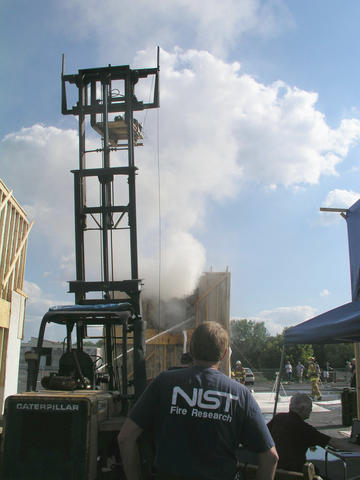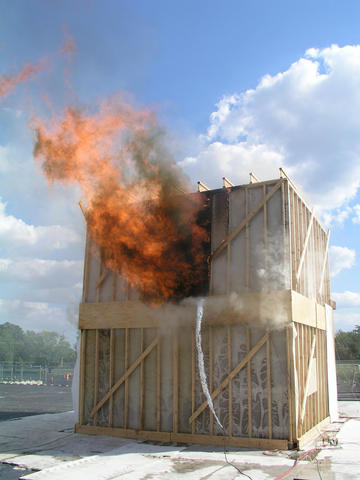The National Institute of Standards and Technology (NIST) conducted experiments this week in Sharon Hill, Pa., on the hazards of fires under residential floors, which can surprise firefighters by hastening structural collapse, and on technologies, such as thermal imagers and acoustic devices, that firefighters might use to assess the danger of collapse.


The test burns, carried out in cooperation with the Delaware County (Pa.) Emergency Services Training Center (ESTC), are part of a multi-year NIST project to investigate potential tools and techniques for predicting structural collapse. NIST previously conducted a series of structural collapse fire tests with the support of the U.S. Fire Administration (USFA), part of the Department of Homeland Security (DHS).
Approximately 20 percent of the deaths of fire fighters in structure fires over the past 10 years have been as a result of structural collapse. Predicting a potential collapse is one of the most challenging tasks facing an incident commander at a fire scene. Usually, the lack of information on the building construction, fire size, fire location, fire burn time, building condition, fuel load and other factors makes the task nearly impossible.
To gain a better understanding of the factors, NIST fire engineers built and burned multiple 16 x 16 foot, wood frame, two-story structures at ESTC. The test scenario simulated a situation in which a fire begins in the basement level, posing a risk to firefighters entering on the first floor. The experiment explored the effects of thermal exposure and weight loading on various building construction types and materials. An array of instruments recorded time and temperature data until the structure collapsed. Sensors also provided comparative data on the effect of different common floor coverings and structural design on the progress of the fire.
NIST fire engineers used three different types of thermal imaging (using barium-strontium-titanate, vanadium oxide and amorphous silicon detectors) to track the spread of the heat through the flooring materials. The researchers also collected data from a prototype acoustical device that is designed to detect structural movement in advance of a collapse. Subsequent analysis should reveal the technology's capabilities to warn of impending structural collapse.
In addition to NIST, the National Fallen Firefighters Foundation (NFFF) and State Farm® are documenting the experiment, and will incorporate the results in a firefighter safety DVD to be released next year. NIST will publish its findings from the Delaware County fire experiments next year.

